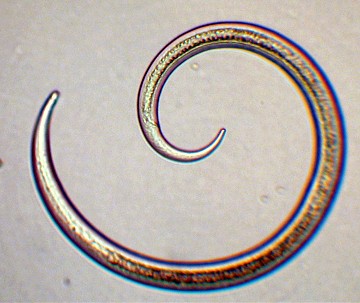
| Palaeos |  |
Nematoida |
| Ecdysozoa | Overview |
| Page Back: Priapulida | Unit Up: Ecdysozoa | Unit Home (you are here) |
Clade Up: Ecdysozoa | Page Next: Nematoida |
| Unit Back: Scalidophora | Clade Down (none) | Ecdysozoa Dendrogram | Nematoida References | Unit Next: Panarthropoda |
|
Abreviated Dendrogram
ECDYSOZOA |--SCALIDOPHORA | `--+--NEMATOIDA |--+--Nematoda | `--Nematomorpha `--PANARTHROPODA |
Contents
Overview
Nematoida |
 Image and caption from Reefkeeping and Sharon Taxonomy |
Of all the metazoan clades to have evolved since the Cambrian explosion, three in particular stand out as extraordinary for their abundance and diversity (each with a million or more species). These are the nematodes, the mites (acari) and the insects. Interestingly, all three are ecdysozoans, and two of the three are mostly microscopic, whilst the third includes a majority of forms built to a tiny scale. But of these three, the nematodes win out as the most numerous animals on Earth, being found in all environments, both free living and parasitic, and even deep under the Earth. Closely related to the nematodes.are the nematomorpha, a small phylum of parasitic worms. They mostly infect terrestrial insects and other arthropods, but reproduce in aquatic environments. Around 300 species are known. MAK120416
| Page Back: Priapulida | Unit Up: Ecdysozoa | Unit Home (you are here) |
Page Next: Nematoida |
page MAK120418. All original text content by M. Alan Kazlev Creative Commons Attribution . Other content copyright respective authors or publishers